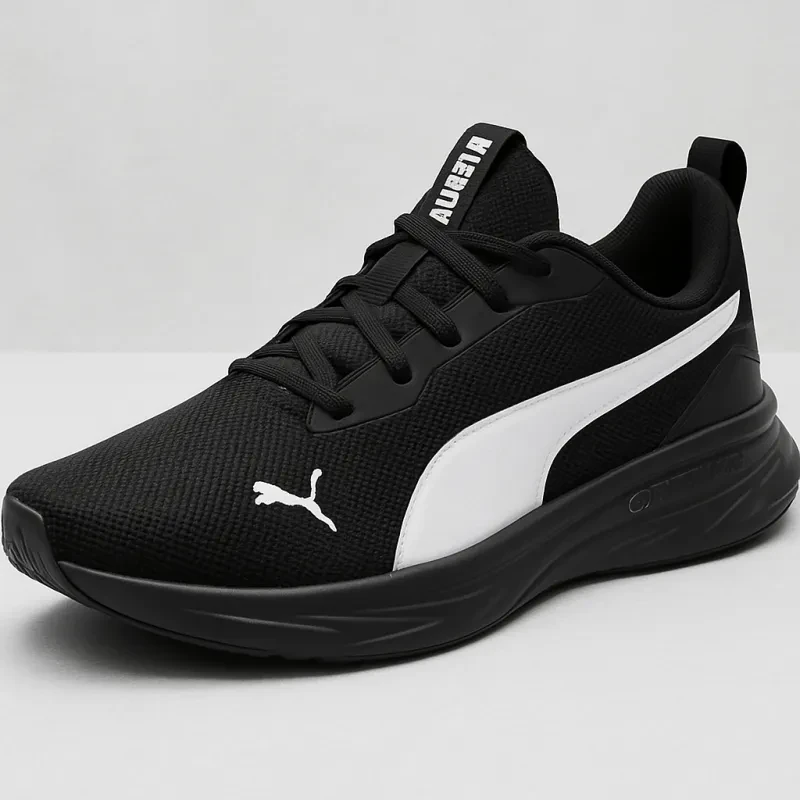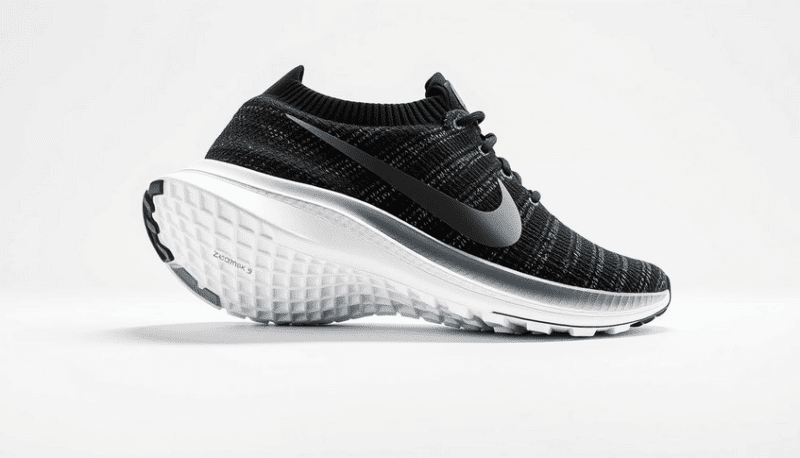Introduction:
Running is a great way to improve your fitness and health. It's also a skill you can get better at over time. Many people want to run faster, whether for races or personal goals. By using specific training methods and focusing on form, you can increase your speed and become a faster runner.

Running faster isn't just about moving your legs quicker. It involves building strength, improving your stride, and boosting your endurance. These elements work together to help you cover more ground with each step and maintain a quicker pace for longer periods.
To run faster, you need a mix of different workouts. This includes sprint training, hill runs, and longer distance runs. Each type of workout helps develop different aspects of your running ability. Proper form is also key. Taking quick, light steps and keeping your body aligned can make a big difference in your speed.
Key Takeaways
- Specific training methods and good form can help runners increase their speed
- A mix of sprint, hill, and distance workouts improves different aspects of running
- Strength training and proper nutrition support faster running performance
The Foundations of Running Faster

Running faster depends on three key factors: running economy, aerobic capacity, and lactate threshold. These elements form the basis for improving speed and performance.
Understanding Running Economy
Running economy refers to how efficiently a runner uses oxygen at a given pace. Better economy means less energy spent to maintain speed. To boost running economy:
• Improve form and technique • Build strength through resistance training • Practice running at race pace • Use proper footwear
Runners with good economy use less energy, allowing them to run faster for longer. Small improvements in economy can lead to big gains in speed and endurance.
The Role of Aerobic Capacity
Aerobic capacity, or VO2 max, measures the body's ability to use oxygen during exercise. A higher VO2 max lets runners sustain faster paces. To increase aerobic capacity:
• Do interval training • Run hills • Mix in tempo runs • Gradually increase weekly mileage
As aerobic capacity grows, runners can maintain faster speeds without building up lactate. This translates to quicker race times across all distances.
The Importance of Lactate Threshold
Lactate threshold is the point where lactate builds up faster than the body can clear it. A higher threshold means runners can go faster before fatigue sets in. To raise lactate threshold:
• Run at threshold pace for 20-40 minutes • Do cruise intervals • Include fartlek workouts
Pushing the lactate threshold higher allows runners to maintain faster paces for longer periods. This is key for racing success, especially in longer events.
Training Techniques for Speed
Speed training helps runners boost their pace and performance. Targeted workouts build endurance and power while improving form and efficiency.
Interval Training Essentials
Interval training mixes fast running with rest periods. This method pushes the body to work harder in short bursts. A basic interval workout includes:
- 5-minute warm-up jog
- 6-8 repeats of 400 meters at 5K race pace
- 90 seconds recovery between repeats
- 5-minute cool-down
Beginners can start with fewer repeats and build up over time. As fitness improves, runners can increase speed or distance of intervals.
Interval training builds speed and stamina. It also boosts VO2 max, which helps runners use oxygen more efficiently.
Mastering Tempo Runs
Tempo runs train the body to run faster for longer periods. These runs are done at a "comfortably hard" pace. Runners should be able to speak in short phrases, but not hold a conversation.
A sample tempo workout:
- 10-minute easy warm-up jog
- 20 minutes at tempo pace
- 10-minute easy cool-down
Tempo pace is usually 15-20 seconds slower than 5K race pace. As runners get stronger, they can extend the tempo portion of the workout.
Tempo runs improve lactate threshold. This allows runners to maintain a faster pace before fatigue sets in.
The Benefits of Sprinting and Speedwork
Sprinting and speedwork build explosive power and speed. These high-intensity efforts improve running form and efficiency.
Sprint workouts can include:
- 10 x 100-meter sprints with full recovery
- 6 x 200-meter sprints with 2-minute rest
- Hill sprints: 8-10 repeats up a short, steep hill
Speedwork enhances neuromuscular connections. This helps the brain signal muscles to fire more quickly and powerfully.
Regular sprinting also increases leg strength and power. This translates to faster running at all distances.
Implementing Fartlek Runs
Fartlek means "speed play" in Swedish. These runs mix fast and slow paces in an unstructured way. Fartleks add variety and fun to speed training.
A basic fartlek workout:
- 10-minute easy warm-up
- 20 minutes alternating between 1 minute fast, 1 minute easy
- 5-minute cool-down
Runners can vary speeds based on feel or landmarks. For example, run fast to the next streetlight, then easy to the next tree.
Fartleks train the body to change speeds quickly. This skill is useful in races and helps prevent boredom in training.
Developing Strength and Form

Building strength and improving form are key to running faster. Strong muscles and proper technique help you run more efficiently and reduce injury risk. Let's explore specific ways to enhance your running performance through targeted exercises and form refinement.
Core Strength for Stability and Power
A strong core is vital for runners. It helps maintain proper posture and allows for better power transfer from your upper body to your legs. Try these core exercises:
- Planks: Hold for 30-60 seconds
- Russian twists: 3 sets of 15-20 reps
- Bird dogs: 3 sets of 10 reps per side
Aim to do core workouts 2-3 times a week. This will improve your stability and help you maintain good form even when tired.
Plyometric Exercises for Explosiveness
Plyometrics boost your power and speed. These exercises involve quick, explosive movements that translate well to running. Include these in your routine:
- Box jumps: 3 sets of 8-10 reps
- Burpees: 3 sets of 10-15 reps
- Jump squats: 3 sets of 12-15 reps
Do plyometrics once or twice a week. Start with lower reps and build up gradually to avoid injury. These exercises will help you push off the ground more forcefully when running.
Refining Running Technique and Form
Good running form is crucial for speed and efficiency. Focus on these key aspects:
- Posture: Keep your head up and back straight
- Arm movement: Swing arms forward and back, not across your body
- Foot strike: Land mid-foot, not on your heel
Practice proper form during easy runs. As you get tired, check your form and make adjustments. Good technique will help you run faster with less effort and reduce your risk of injury.
Nutrition and Recovery Strategies

Good nutrition and proper recovery are key to improving running speed. They help runners refuel, repair muscles, and prepare for the next workout.
Dietary Choices for Runners
Runners need a balanced diet with plenty of carbohydrates, proteins, and healthy fats. Carbs are the main fuel source for running. Good choices include:
- Whole grains
- Fruits
- Starchy vegetables
Protein helps repair and build muscle tissue. Lean meats, fish, eggs, and beans are great options. Runners should also eat lots of colorful fruits and vegetables. These provide vitamins, minerals, and antioxidants that support health and recovery.
Timing matters too. Eating a small meal with carbs and protein within 30-60 minutes after a run helps start the recovery process. Staying hydrated is also crucial for performance and recovery.
The Significance of Sleep and Rest
Sleep is when the body does most of its repair work. Runners need 7-9 hours of sleep each night. Good sleep habits include:
- Sticking to a regular sleep schedule
- Creating a dark, quiet bedroom
- Avoiding screens before bed
Rest days are just as important as training days. They give the body time to recover and adapt to training stress. Most runners need at least one full rest day each week.
Active Recovery and Its Impact
Active recovery means doing light exercise on rest days. This can speed up recovery by:
- Boosting blood flow to muscles
- Reducing muscle soreness
- Keeping joints mobile
Good active recovery options for runners include:
- Easy walking
- Gentle yoga
- Light swimming
These activities should feel easy and not cause fatigue. The goal is to move the body without adding stress.
Additional Training Variables

Getting faster at running involves more than just logging miles. Smart runners use other methods to boost their speed and fitness.
Cross-Training for Overall Fitness
Cross-training helps runners build strength and avoid burnout. Swimming is great for cardio without impact. Cycling builds leg power. Yoga improves flexibility and balance. Strength training makes muscles and bones stronger. This helps prevent injuries.
Aim for 2-3 cross-training sessions per week. Mix up activities to work different muscle groups. Start with 20-30 minute sessions. Gradually increase time as fitness improves.
Cross-training also gives running muscles a break. This speeds up recovery between runs. It keeps runners fresh and motivated.
Managing Training Volume and Load
Smart runners balance hard work with rest. They slowly increase weekly mileage. A good rule is to add no more than 10% per week. This lets the body adapt safely.
Runners track total weekly miles. They also note how fast and hard they run. This is called training load. It's key to not increase load too fast.
Easy runs should make up most weekly miles. Hard workouts are important too. But too many can lead to burnout or injury. A typical week might include:
- 3-4 easy runs
- 1 long run
- 1-2 speed workouts
Rest days are crucial. They let the body repair and get stronger.
Tackling Plateaus for Continued Improvement
All runners hit plateaus. This is when progress slows or stops. It's normal and can be fixed.
Changing up workouts can help. Try new routes or terrain. Add hill runs or track intervals. These challenge the body in new ways.
Runners can also tweak their pace. Run easy days slower. Push harder on speed days. This creates more contrast in training.
Setting new goals helps too. Sign up for a race. Try a new distance. Having a target keeps runners motivated.
Sometimes, taking a short break from running helps. A week of light cross-training can refresh both body and mind.
Frequently Asked Questions
Running faster requires a mix of training methods, proper technique, and good nutrition. These questions address key ways to boost speed and endurance for runners.
How can I improve my running speed over time?
Gradually increase your weekly mileage. Add speed workouts like intervals and tempo runs. Focus on proper form and posture while running. Rest and recover between hard workouts.
Build leg strength with exercises like squats and lunges. Work on your core muscles to improve stability. Stay consistent with your training plan over several months.
What techniques help increase endurance and speed for long-distance running?
Do long slow runs to build aerobic fitness. Practice negative splits by running the second half of a run faster. Try progressive runs that get faster as you go.
Cross-train with swimming or cycling on rest days. Improve running economy by working on your form. Build mental toughness through challenging workouts.
Can sprint training enhance my speed for longer races?
Yes, sprint training can help longer distance runners. It builds fast-twitch muscle fibers. This improves running form and efficiency at all speeds.
Add short hill sprints to your routine. Do track workouts with 100-400 meter repeats. Mix in fartlek runs with short bursts of speed.
What are the best practices for boosting speed in short-distance running?
Focus on explosive power and acceleration. Do plyometric exercises like box jumps and bounding. Practice starts from different positions.
Work on arm drive and knee lift. Improve ankle strength and flexibility. Run with a tall posture and lean slightly forward.
How can interval training contribute to running faster?
Interval training improves VO2 max and lactate threshold. It teaches your body to run at faster paces. Intervals boost both speed and endurance.
Try 400m repeats on a track. Do hill intervals on a steep incline. Alternate between fast and slow paces during a run.
What role does diet and nutrition play in enhancing running performance?
Eat a balanced diet with lean protein, complex carbs, and healthy fats. Stay hydrated before, during, and after runs. Fuel properly for long runs and races.
Time meals and snacks around workouts. Consider sports drinks for runs over 60 minutes. Eat foods rich in iron and vitamins to support training.



